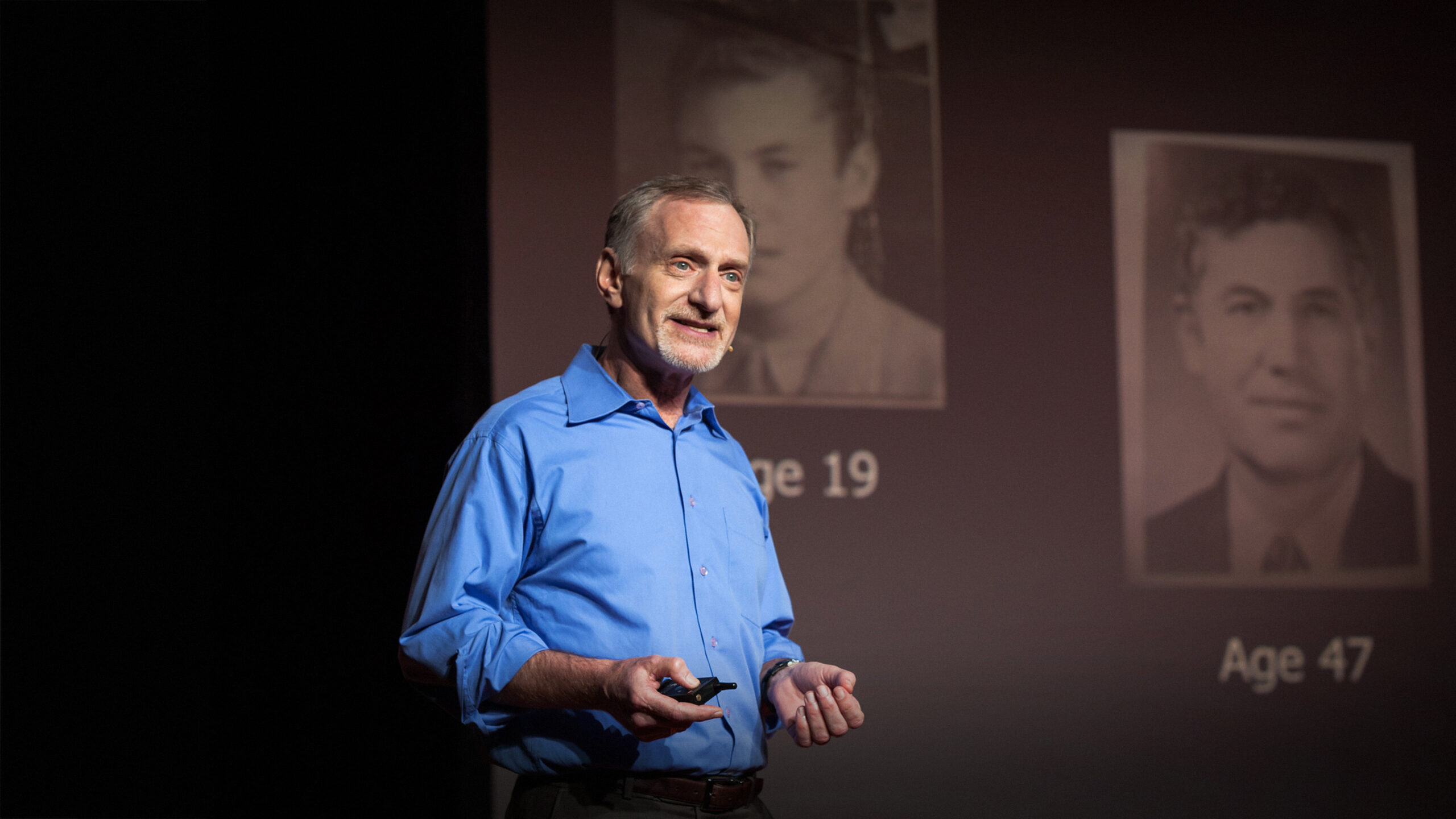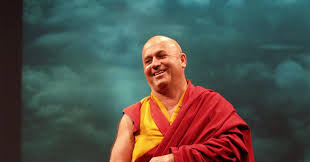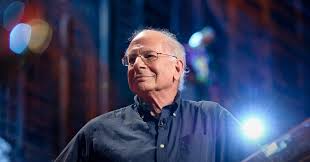This article reviews the top seven most viewed TED Talks on happiness. The talks are listed below with short summaries. Reading on you’ll find the more detailed summaries.
1. What Makes a Good Life? Lessons from the Longest Study on Happiness by Robert Waldinger – (31M views) Quality relationships are the most important factor in longevity, well-being, and lifelong happiness.
2. The Surprising Science of Happiness by Dan Gilbert – (18.3M views) We can think of natural happiness as a response to positive external circumstances and synthetic happiness as our mind’s tendency to create happiness from accepting what is. Our society tends to favor the “natural” but the “synthetic” is just as good.
3. The Habits of Happiness by Matthieu Ricard – (9.3M views) We often mistake pleasure for happiness; this is a critical error. Pleasure is temporary, using itself up as it goes. Happiness is a sustainable well-being cultivated through mind training.
4. The Riddle of Experience vs. Memory by Daniel Kahneman – (6.1M views) The study of happiness has been methodologically flawed by failing to account for the differences in experienced happiness – associated mainly with pleasant emotions — versus remembered (reflective) happiness – associated mainly with accomplishment.
5. Flow, the Secret to Happiness by Mihaly Csikszentmihalyi – (5.8M views) Striking an adequate balance between challenge and skill leads to a state of optimal experience characterized by stepping out of the ordinary reality into a state of engaged, selflessness. Consistent experience of this state is conducive to long-term happiness.
6. The New Era of Positive Psychology by Martin Seligman – (5.5M views) The happy life can be thought of in three ways: the pleasant life (maximum positive emotion), the engaged life (maximum time spent in flow), and the meaningful life (use of character strengths to serve something larger than yourself). These “lives” exhibit a synergistic effect as when they are all present happiness is amplified to a level greater than the sum of the parts.
7. How to Buy Happiness by Michael Norton – (4.2M views) Money can buy happiness. Spending money on others increases our happiness and improves sociability.
One-Minute Summaries
What Makes a Good Life? Lessons from the Longest Study on Happiness.
Robert Waldinger is a psychiatrist at Harvard Medical School and director of the
Grant Study – the longest running study on adult health and happiness.
Since 1938 researchers have followed 724 men tracking their work, home life,
health, etc. About half the people were Harvard sophomores. The others were
from Boston’s poorest neighborhoods. To this day, the participants – and in many
cases their children and grandchildren – have gone through the same interviews,
examinations, and procedures every year to track how they’re living.
What has the study found?
Success and income are irrelevant. So too are romance and work. Relationship
quality is the single factor that determines happiness.
In addition to making us happy, strong relationships protect the brain and body.
Analyzing the data from when the subjects were 50 years old, the most significant
predictor of longevity was relationship satisfaction. Good relationships promote
better memory and cognitive function, whereas memory decline occurs earlier in
those with poor relationships.
As Waldinger puts it, “Good relationships keep us happier and healthier, period.”
People with quality relationships are not only happier, they’re healthier and live
longer.
The Surprising Science of Happiness
Dan Gilbert is a Harvard social psychologist and author of Stumbling on
Happiness.
As brains evolve they gain new structures. Humans have grown something called
a prefrontal cortex: it’s an experience simulator. Just as pilots use simulators,
humans do too. We’ve all done this and no other animal can do it quite like us.
Let’s put this skill to use…
You have two options, do you want to win the lottery or become paraplegic?
Obvious right?
Actually, data shows that one year after the fact these groups are almost equally
happy.
We exhibit something called “impact bias” – our brains overestimate how much
things will affect us. We overlook the fact that happiness can be synthesized. We
have a “psychological immune system” which helps us change our views of the
world so that we feel better about the worlds we live in. We can synthesize
happiness inside but think it has to be found outside. Here are a few examples…
The founder of McDonald’s was tricked out of his business and says it was the
best thing that ever happened to him. The Beatles original drummer was cut from
the band and said he’s glad he was. Finally, have you heard someone say that “his
or her leaving was the best thing for me,” after a breakup?
These people have something to show us. Gilbert says that “natural” happiness is
what we get when we get what we want and “synthetic” is what we make when
we don’t get what we want. Our culture thinks that only “natural” counts for
something. This belief is the result of capitalism and consumerism. “Synthetic”
happiness is just as real and enduring as the kind you get when you stumble upon
something you wanted.
As Gilbert puts it, “We can manufacture the very commodity (happiness) that we
are constantly chasing.”
The Habits of Happiness
Mattheiu Ricard is a former molecular biologist who left academia to live as a
Buddhist monk. He is the author of multiple books including Happiness: A Guide
to Developing Life’s Most Important Skill.
There seems to be a common misconception: pleasure is happiness. This is a big
mistake. Pleasure is actually the companion of suffering – the two go hand in
hand. This is because pleasure consumes itself as it goes. Its very existence burns
itself out. Think of a chocolate cake: the first piece is delicious, the second piece
is okay, and the third is disgusting. We may be very cold and go next to a warm
fire. We feel wonderful but after a few seconds it’s too hot.
We also tend to look outside. If we could just have everything we need to be
happy then surely we would be. But that attitude is the doom of happiness. Our
control of the outside world is very limited. On the other hand, we have internal
conditions which translate outside conditions into either happiness or suffering.
Of course, external conditions matter; however those alone are not enough. The
mind is the device that translates external conditions into internal experience.
There are positive states of mind conducive to happiness. And there are negative
states of mind that are destructive to it. A trained mind observes negative states
such anger, hate, fear, etc. as they arise and allows them to dissipate without
disturbance. A trained mind readily cultivates positive states such as compassion,
serenity, and joy. This is what Buddhists call mind training – and it’s backed by
modern neuroscience. Researchers studied the brains of Ricard and his fellow
monks. They found that skilled meditators were literally off the charts on brain
measurements of things like compassion and joy.
In short, pleasure is not happiness. True happiness is cultivated through the
systematic training of the mind.
The Riddle of Experience vs. Memory
Daniel Kahneman is a renowned psychologist and behavioral economist. He is the
author of Thinking; Fast & Slow.
At the time of his talk, there had been over 40 books published in the last few
years with “happiness” in the title. However, there are a few traps that make it
nearly impossible to analyze happiness. The biggest trap is the confusion between
being happy in your life versus being happy with your life. This is the riddle of
experience versus memory.
Imagine going to a beautiful symphony. It’s an amazing performance, but at the
end a performer misses a note and makes a terrible screeching sound. It ruins the
performance. But there’s a disconnect here. We had enjoyed forty minutes of
happy experience and only a second of displeasure. But we remember the event as
unhappy.
We can think of two selves: the experiencing-self and the remembering-self. The
remembering self is a storyteller that follows the peak-end rule. It measures
memories in terms of the peak emotional state associated with it and how it
ended. This is illustrated in a study with two groups of patients who underwent
painful procedures. In group one the procedure lasted a few minutes longer, but
with peak pain at the beginning. In group two the procedure was shorter but with
peak pain at the end. Those in group one, who actually suffered for more time,
reported less suffering. So, we have a riddle.
The remembering-self’s happiness can directly contradict the experiencing-self’s
happiness.
There’s different happiness for each of our “selves”. We can know a lot about
how satisfied we are with life and still have no idea how happily we live it. In
fact, the correlation between the two is only about 0.5. When thinking about
happiness, we must carefully consider both types of happiness and focus on
different things depending on which happiness we want to improve.
Flow, the Secret to Happiness
Mihaly Csikszentmihalyi is a noted psychologist and author of Flow: The
Psychology of Optimal Experience.
We begin with the statistical fact that happiness in society does not increase with
wealth once we rise above the poverty line. Over the last century economic
growth has not really enhanced human morale. So what does facilitate happiness?
Perhaps creative individuals like artists and scientists have something to offer.
As Csikszentmihalyi began his research of creatives he began to find a common
theme. One composer described an “ecstasy” which comes about in the middle of
performance. This state is we now know as flow.
Flow is an alternate reality that we step into outside of our normal routines. Every
culture has locations or methodologies for entering this space. The composer also
said that during these moments of creative expression he felt like he didn’t exist
and his hands were moving by themselves. This pattern emerges wherever
creativity is found: science, art, business, etc.
The flow pattern is comprised of eight elements. We’re completely immersed in
what we’re doing (1). We have a sense of being outside of everyday reality (2).
We have inner clarity (3) and the skills to complete the task (4). We have a sense
of serenity (5), a sense of timelessness (6), and an intrinsic motivation (7).
Finally, our thought and action merge (8).
Optimal experience occurs when we strike a balance between challenge and skill,
anxiety and control, thought and action. This experience is known as flow.
The New Era of Positive Psychology
Martin Seligman is the former president of the American Psychological
Association and is regarded as the founder of positive psychology. He is the
author of Authentic Happiness, Learned Optimism, and Flourish
For the last two centuries psychology worked on the disease model: “what’s
wrong with you and how can we bring you back to normal?” The downside of this
approach was that psychologists became pathologists and victimizers, often
forgetting that humans are responsible agents. Psychology also forgot about
normal people and improving normal lives. Finally, under the disease model
psychologists sought to repair damage and never thought about preemptive
interventions to make people happier.
All this changed with positive psychology.
Positive psychologists contend that we should be just as concerned with strength
as with weakness, with building as repairing, and with nurturing high talent in the
lives of normal people as with helping diseased people. Researchers began to ask:
“how do very happy people differ from the rest of us?”
We can answer this question in terms of three happy lives: the pleasant life
(positive emotions maximized), the engaged life (lots of flow), and the
meaningful life (serving a greater cause).
The pleasant life consists of as much positive emotion as we can get and learning
the skills to amplify positive emotion. There are two drawbacks to this life: 50%
of this is hereditary and positive emotions habituate quickly (they wear out).
The engaged life is different from the pleasant life. The pleasant life is about raw
feelings, but in flow we don’t necessarily feel as much. Rather, we merge with
our activity in the moment and experience a sensation of selfless immersion.
We also have the meaningful life, which is traditionally the most venerable. We
know our greatest strengths and use them to serve something larger.
Within each of these “lives” we find that interventions and practices work. In
equation form you get: Happy life = Pleasant life + Engaged life + Meaningful
life. These lives must come together to create a truly satisfying life.
How to Buy Happiness
Michael Norton is a professor at Harvard Business School and author of multiple
books that explore money and happiness.
It turns out that when people win the lottery it typically ruins their lives. Data
shows that they end up with more debt and worse friendships. But we have a hard
time using data-driven facts to overcome our intuitions – especially when it comes
to happiness and money. The truth is money can – not always – but can make us
selfish and antisocial.
The old adage states that money cannot buy happiness. Maybe we’re just
spending it wrong?
Researchers designed an experiment. They gave a student an envelope of money.
Some were told to spend the money on themselves and others to spend the money
on others. At the beginning and end researchers asked each student how happy he
or she felt. What happened?
People who spent money on others were happier. Those who spent it on
themselves showed no change. How much money didn’t matter much either, all
that mattered is that it was spent on others.
But this could just be in a first world country where money isn’t as big of a deal
right? In Uganda researchers did the same study. Again, we see human universals.
Those who spent on others were happier while those who spent it on themselves
were about the same.
Money can buy us happiness, if we know how to spend it.
If you liked this article on the science of happiness, then I think you’d enjoy getting an email from me every two weeks where I share practical insights and stories about happiness. You can try it by leaving your email where it says “Learn & Practice” below.
References
Csikszentmihalyi, Mihaly, speaker. Flow, the Secret to Happiness. TED, TED
Official Conference, Feb. 2004.
Gilbert, Dan, speaker. The Surprising Science of Happiness. TED, TED Official
Conference, Feb. 2004.
Kahneman, Daniel, speaker. The Riddle of Experience vs. Memory. TED, TED
Official Conference, Feb. 2010.
Norton, Michael, speaker. How to Buy Happiness. TED, TEDxCambridge, Nov.
2011.
Seligman, Martin, speaker. The New Era of Positive Psychology. TED, TED
Official Conference, Feb. 2004.
Waldinger, Robert, speaker. What Makes a Good Life? Lessons from the Longest
Study on Happiness. TED, TEDxBeaconStreet, Nov. 2015.







